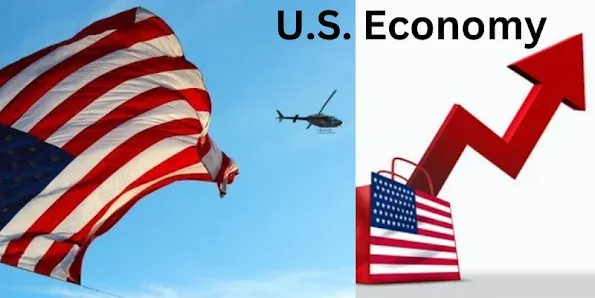USA Market & Economic Factors
Recently, the U.S. economy has been facing a slowdown. Here are some key reasons and effects:
Rising Prices (Inflation): Prices for everyday items like food, gas, and rent have gone up. This is called inflation. When prices rise quickly, people have to spend more money on basic needs, leaving less for other things. This can make people more cautious about spending.
Interest Rates: To control inflation, the Federal Reserve (the central bank of the U.S.) raises interest rates. Higher interest rates mean that borrowing money (like loans for cars or houses) becomes more expensive. This can lead to fewer people buying homes or making large purchases, slowing down economic growth.
Job Market Challenges: Although the job market was strong post-pandemic, signs of a slowdown are appearing. Some companies are hiring less or even laying off workers. When people worry about job security, they tend to spend less, which further slows down the economy.
Consumer Confidence: When people feel uncertain about the future, they are less likely to spend money. If consumers think the economy is weak, they may hold back on buying new cars, clothes, or even going out to eat.
Global Factors: Events around the world can also impact the U.S. economy. Issues like supply chain disruptions, wars, or changes in trade agreements can create challenges. For example, if it becomes harder to get goods from other countries, prices may rise even more.
2. Rising Inflation: Inflation has surged in many Western countries, driven by increased consumer demand, supply chain disruptions, and higher costs for raw materials. This has led to higher prices for goods and services, squeezing household budgets and reducing spending.
3. Higher Interest Rates: Central banks, like the Federal Reserve in the U.S. and the European Central Bank, have raised interest rates to combat inflation. Higher rates make borrowing more expensive, which can slow down consumer spending and business investment.
4. Geopolitical Tensions: Ongoing conflicts and tensions, such as the war in Ukraine, have led to energy price spikes and disruptions in global supply chains. This uncertainty affects trade and economic stability.
5. Energy Costs: Energy prices have risen significantly, particularly in Europe. This affects not just household budgets but also the costs of production for businesses, leading to reduced profit margins and investment.
6. Labor Market Challenges: While unemployment rates are relatively low, many countries face labor shortages in key sectors. This can limit growth as businesses struggle to find qualified workers, impacting productivity.
7. Consumer Confidence: Economic uncertainty has led to decreased consumer confidence. When people feel unsure about their financial future, they tend to spend less, which can further slow economic growth.
8. Global Supply Chain Issues: Many Western economies rely on global supply chains. Disruptions, whether from natural disasters, geopolitical tensions, or the lingering effects of COVID-19, can lead to shortages and higher prices.
GDP Growth
Recent reports indicate that GDP growth has slowed. While the economy showed some recovery post-pandemic, growth rates have been declining compared to previous years.2. Inflation Rates
Inflation has remained persistently high, affecting consumer purchasing power. Although there have been signs of easing, core inflation rates are still above the Federal Reserve's target.3. Consumer Spending
Retail sales data shows that consumer spending has moderated. People are prioritizing essential goods over discretionary spending, reflecting concerns about financial stability.4. Interest Rates
- The Federal Reserve has raised interest rates multiple times to combat inflation. Higher borrowing costs can lead to reduced consumer and business spending, contributing to economic slowdown.
5. Job Market Trends
While unemployment rates are relatively low, job growth has shown signs of slowing. Some industries are experiencing layoffs, and hiring has become more cautious.6. Manufacturing and Services Indexes
- Key indicators like the Manufacturing Purchasing Managers' Index (PMI) and Services PMI have shown contraction or slower growth, signaling reduced activity in these sectors.
7. Business Investment
Business investments have cooled, with companies becoming more cautious in spending on expansion and capital projects due to economic uncertainty.In the third quarter, stock prices moved up and down a lot, but major market indexes showed some stability. Rob Haworth, a senior investment strategist at U.S. Bank Asset Management, says that while the markets think the economy is doing okay, it’s not great. He points out that investors are paying close attention to the Federal Reserve (the Fed), which, for the first time since 2020, hinted at possible interest rate cuts in September.
The big question now is how quickly these rate cuts will happen. Important is that investors seem uncertain. “The markets seem fine if slower economic data means the Fed will cut rates more aggressively, as long as that doesn't lead to a recession. But they also seem okay if the Fed doesn't need to cut rates too much,” he explains.









.webp)




